
Here is my Swiss Meringue Buttercream recipe and tutorial! This buttercream frosting recipe is light, just the right amount of sweet, and perfect for frosting cupcakes. Just decorate with sprinkles, and you’ve got yourself an easy and delicious dessert!
My Favorite Buttercream Frosting Recipe
I love buttercream.
It is a fact.
I was in the supermarket a while ago snooping around their bakery.
Sometimes they give free samples out to kids, so I was just checking to make sure that their, ahem, free kid samples were fully stocked. You know, just looking out for the children.
Anyway, there sitting in the bakery was a cake. Not unusual, I suppose, but on the label for the “bakery-made” cake was a sticker that said “Better-Cream”.
Huh?
What could be better than Buttercream?
I believe, sir, that is a challenge.
So, in the name of research I had to buy the cake and try this “Better-Cream”.
Upon my arrival at home I created the appropriate environment…candles, soft music, the good china.
I was fully prepared to have a new love of my life.
Good silver in hand, I cut my beautiful, frosting rose covered, “better-cream” cake slice.
The Best Swiss Meringue Buttercream Frosting
The moment the first bite hit my tongue I knew I had been foiled. “Better-Cream” was, in fact, not “better” at all. It was horrendous. Whipped garbage would have been a more accurate name.
I am not sure who devised “Better-Cream”, but they obviously have never eaten cake before…or maybe ever eaten at all.
You might think I am being overly dramatic, but buttercream frosting is serious.
This is why when I first read about “Swiss Meringue Buttercream” I was dubious.
It sounded a little sophomoric to me, a self-proclaimed buttercream connoisseur.
Plus, there is no reason to fancy-up buttercream. No reason at all.
But, again, in the name of research, I went ahead and gave it a shot.
What I ended up with was a light, but dense, incredibly silky, not too sweet frosting.
Beautifully shiny and not for the faint of heart, it will make any cupcake seem like something special.
Have I sold you yet?
Go ahead, give it a go!
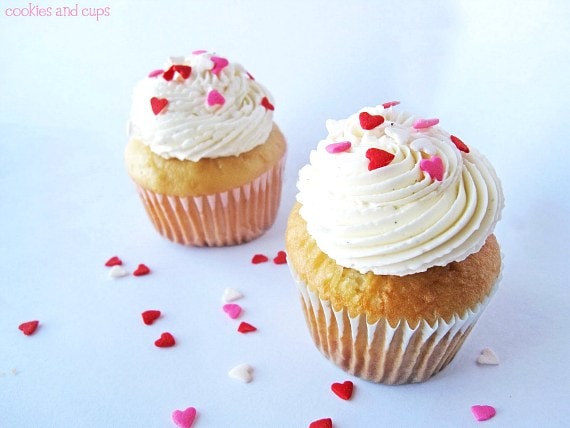
How to Make Swiss Meringue Buttercream:
Swiss Meringue Buttercream
5 large egg whites
1 1/4 cup sugar
1 1/4 cup sugar
1 pound (4 sticks) butter, cut into tablespoons, room temperature..I used salted butter, just a personal preference
2 teaspoons pure vanilla extract (I used vanilla bean paste)
2 teaspoons pure vanilla extract (I used vanilla bean paste)
—————————————————————————————————
Combine egg whites…
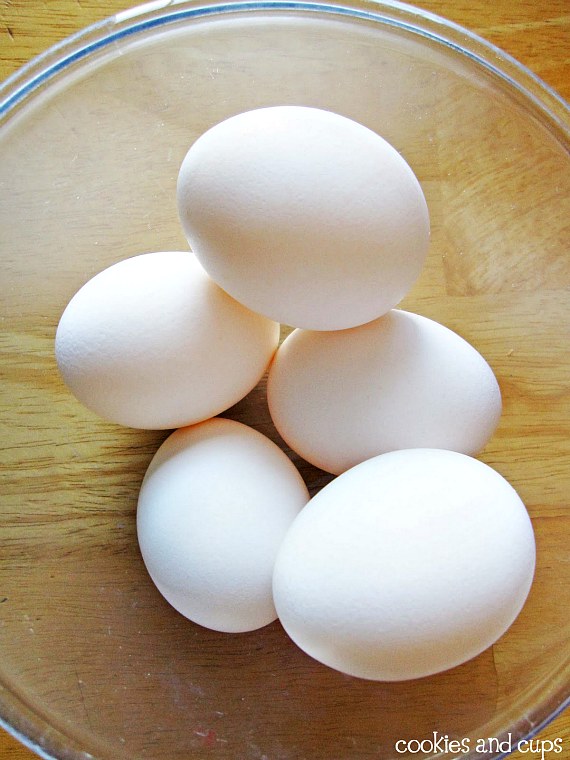
and sugar …
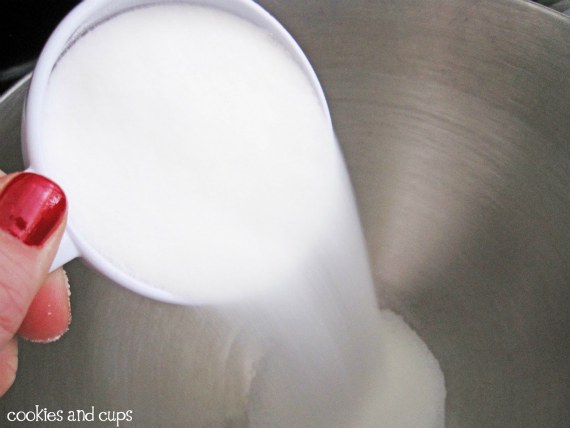
into the heatproof bowl of a standing mixer set over a pan of simmering water, much like a double boiler.
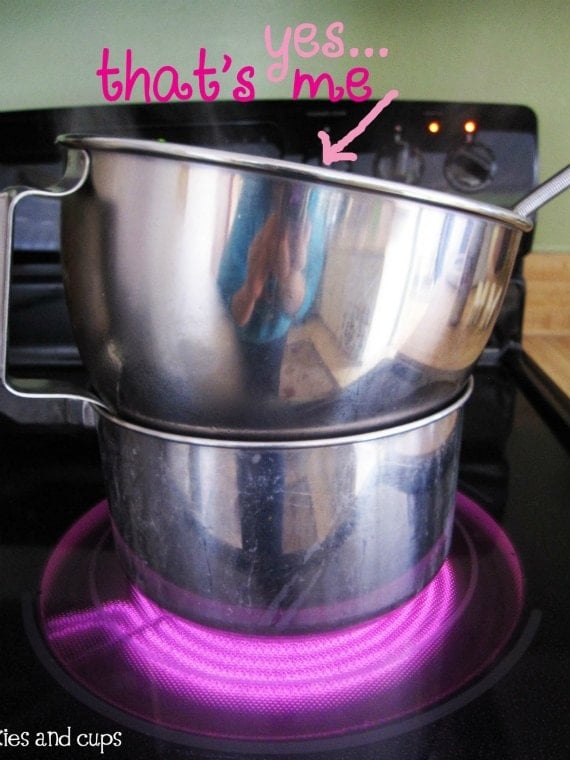
Whisk constantly by hand until the mixture is sugar has dissolved. First it will look like this…
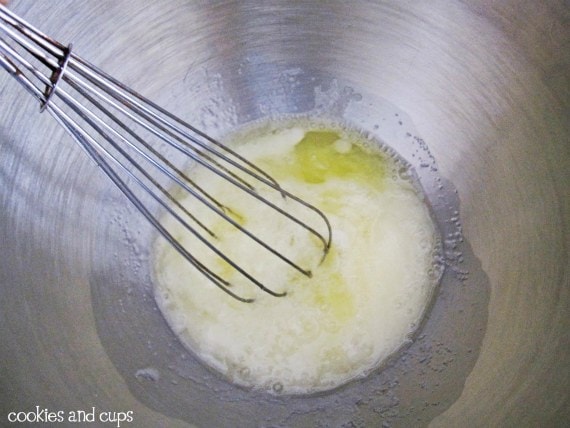
and then when it is done, like this…
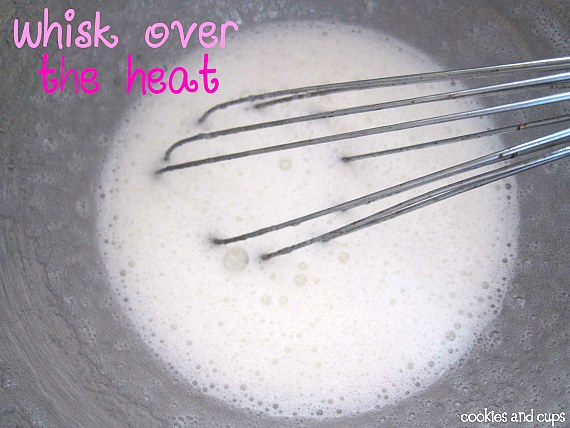
(the mixture should feel completely smooth when rubbed between your fingertips, no grainy sugar), approx 2 minutes.
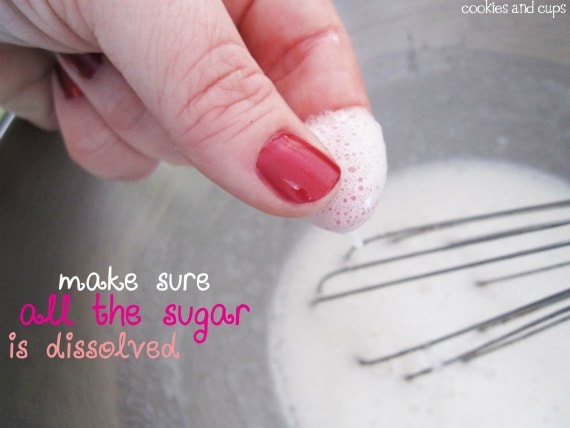

Swiss Meringue Buttercream
- Prep Time: 20 min
- Total Time: 20 minutes
- Yield: Frosts an 8” cake 1x
- Category: Dessert
- Method: Stovetop
- Cuisine: American
Description
Make perfect Swiss meringue buttercream frosting from scratch! This easy step-by-step tutorial makes light and fluffy SMBC that’s just sweet enough. It adds a silky, fancy touch to any cakes and cupcakes!
Ingredients
Scale
- 5 large egg whites
- 1 1/4 cup sugar
- 1 pound (4 sticks) butter, cut into tablespoons, at room temperature (see note)
- 2 teaspoons pure vanilla extract or vanilla bean paste
Instructions
- Combine egg whites and sugar into the heatproof bowl of a standing mixer set over a pan of simmering water, much like a double boiler. Whisk constantly by hand until the mixture is sugar has dissolved (the mixture should feel completely smooth when rubbed between your fingertips, no grainy sugar), approx 2 minutes.
- Put mixing bowl on mixer and using the whisk attachment start mixing. Begin on low, raising the speed up to medium high. Beat until stiff peaks form, about 10 minutes.
- Now add your butter, 2 tablespoons at a time. Beating on medium until each addition of butter is added.
- Now add your vanilla.
- Remove the whisk attachment and replace it with your paddle attachment.
- Mix with paddle for 2 minutes on low speed working out the air bubbles.
Notes
- I use salted butter as a personal preference. You can use unsalted butter if you prefer.
- Makes enough frosting to fill and frost one 8″ layer cake.
- Store airtight in the fridge for 3 days.
Nutrition
- Serving Size: 1 slice
- Calories: 383
- Sugar: 21 g
- Sodium: 34 mg
- Fat: 32.5 g
- Carbohydrates: 21.1 g
- Protein: 2.9 g
- Cholesterol: 158.5 mg


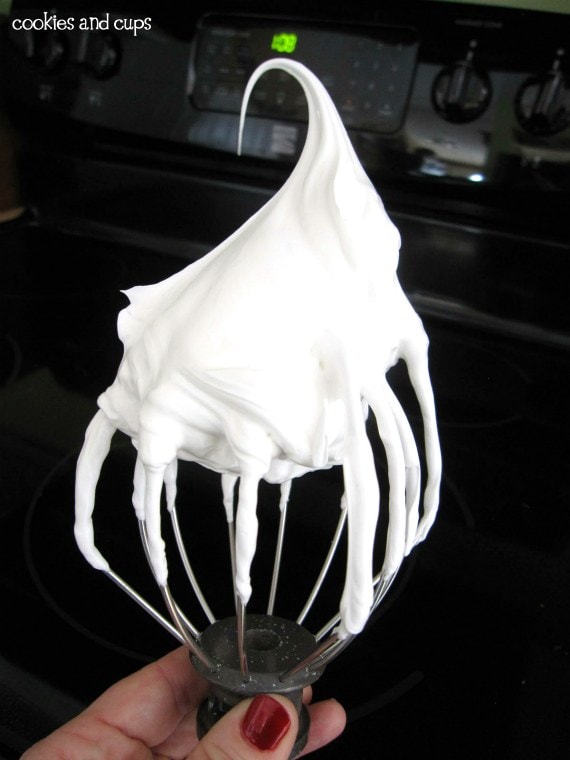
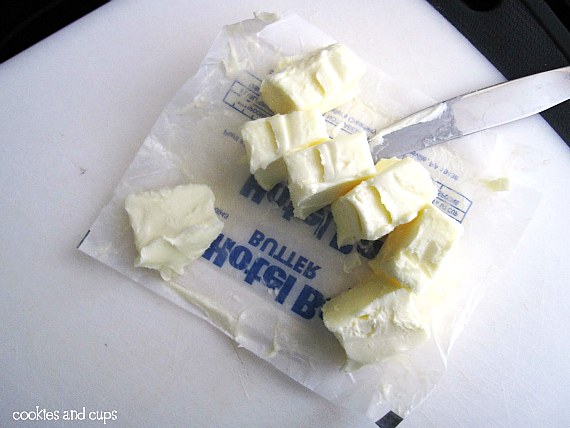
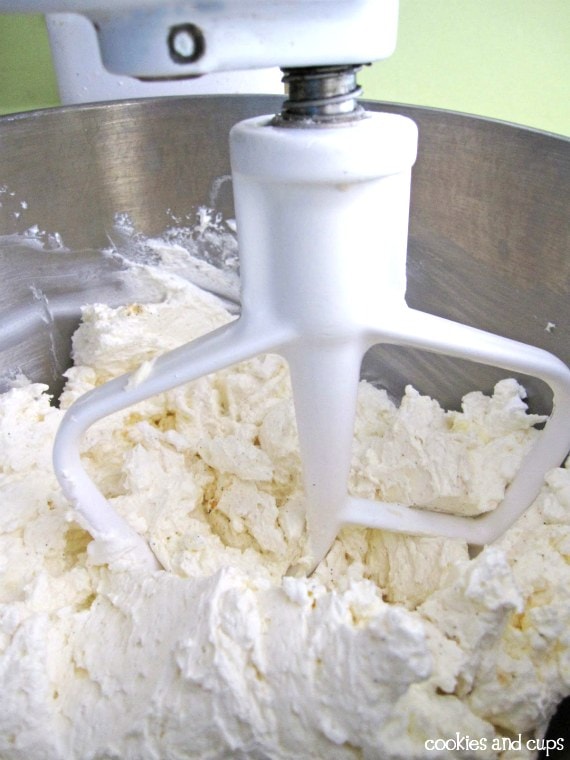

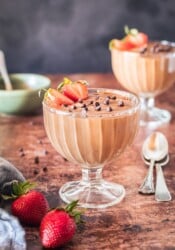
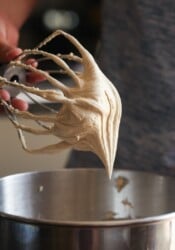
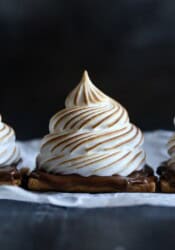
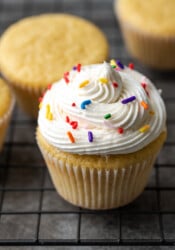









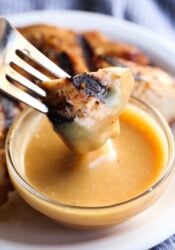
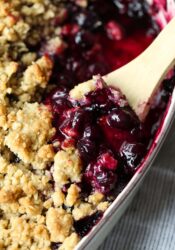
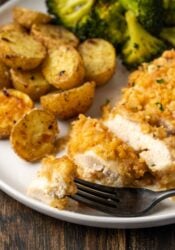
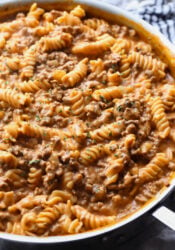

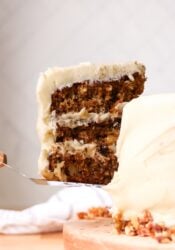
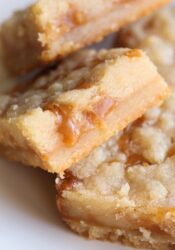

I made this today and it was surprisingly easy! However, I took your advice and used salted butter and, although I like some salt in my desserts, the saltiness just got too concentrated for frosting and it was just strange. My children (8 and 6) didn’t like it, and one of them in particular is usually a frosting fiend. Perhaps the salted butter I use (Kerrygold) is saltier than most? Now I’m trying to find a way to salvage what I didn’t use because there’s a lot left!
Despite this, I will likely make this again, because the texture was awesome and I liked how it wasn’t overly sweet. I might even use SOME salted butter, but it will definitely not comprise the whole butter part of the recipe again.
Anyway, thanks for the nicely laid out instructions!
Can you tell me how much is 1 1/2 cups in grams. Please reply
I so want to try this can you give me a break done on a double amount please ?
I personally think traditional buttercream is sickeningly sweet, and too greasy. I made some last night… hadn’t done it in a while. Now I remember why I switched to Bettercream years ago (though, truthfully I prefer to decorate with Pastry Pride). But since you really don’t get the same control with Bettercream, and I’m delving into more advanced piping techniques I’m going to give the Swiss version a try. I’ll probably try the Italian version as well. Thanks for sharing.
BTW, there is no reason why cream cheese for half the butter wouldn’t work in this recipe, so once I master the base version, I’ll try the cream cheese option. (I once made a 3-tiered carrot cake for a wedding, all frosted with cream cheese buttercream.)
Is there any way to make it cream cheese flavored?like substitute some cream cheese for some of the butter..? i would like to use this on my red velvet cake… or would it be okay just the way it is?
Not for the swiss meringue buttercream. you definitely can with a regular buttercream!
okay thanks :).. i might just try this the way it is.. i don’t think there’s any way it could taste bad…
I know I’m a minority, but I am not a big fan of Buttercream because I can taste the Crisco too strongly & it leaves a paste in my mouth whether it’s homemade or store bought. This recipe sounds so DELISH – gonna give it a try!
I made it and it was intense labor but didn’t like it. It was too buttery for my taste. I am still looking for a tastier icing.
I love Swiss meringue buttercream! I tried it for the first time earlier this year and I can’t go back to regular buttercream now. It looked intimidating to make, but it was actually really easy.
Could you please repost the pictures? I love your blog!
Oh wow, I wonder where they went!! I will try to get to that today! Thanks 🙂